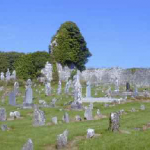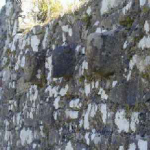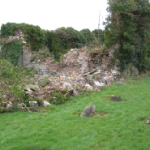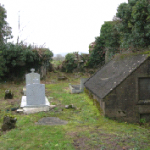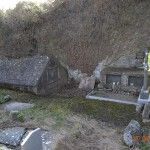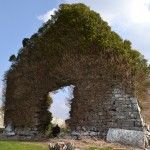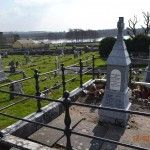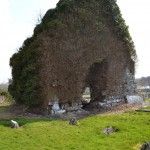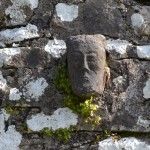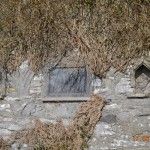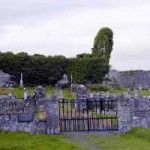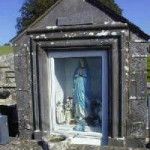 Attached to the old monastic site, of which St Luctighern is patron. His feast is 28th April. Has the same tradition for coffin access as Drumline.
Attached to the old monastic site, of which St Luctighern is patron. His feast is 28th April. Has the same tradition for coffin access as Drumline.
There are many traditional family graves in the old part of the cemetery.
St Luctighern’s well is kept in excellent condition. Parts of the old parish church are reckoned to be pre 1000AD. Much folklore and tradition associated with the three sculptured faces on the east wall of cemetery.
In the high winds of the night of Wednesday, 10 Jan 2007, the stones and ivy that was the east wall of St Luctighern’s church Fenloe came tumbling down. Experts believe that parts of the walls predate 1000AD. The very large stones in parts of the walls are the clue to this dating. Some other features suggest changes and renovations in subsequent centuries.
For over one thousand years Fenloe was a monastic and parish church, a centre of religion and learning. There is a tradition that the original monastic settlement dating from around 540AD was sacked by the Danes in 944AD.
We learn from a letter from the High Sheriff of Clare, dated 2 May 1744, that all the mass houses in his jurisdiction, the county of Clare, were nailed up. This was part of the penal law system introduced at the end of the seventeenth century and marked the end of Fenloe as an active centre of religion.
In 1744 Patrick O’Quin was parish priest of Fenloe and Kilnasoolagh. He succeeded William O’Halloran who died in 1728. A grave stone discovered in 1925 marks the place where Patrick O’Quin was buried on 20 Jan 1761, outside the south wall of the closed church, opposite the high altar.
The last parish priest of Fenloe and Kilnasoolagh was James O’Halloran who died on 11 April 1782. Later that year the seven parishes were united under James O’Shaughnessy, later bishop who was parish priest of the other five parishes at the time.
The story of Fenloe takes us back to the beginning of Christianity on this island and gets honourable mention in the Annals of the Four Masters.
The crumbling process starting with its closure in 1744 has continued. The north wall fell in during a thunder storm on 22 July 1907. The remaining walls are obviously quite fragile and visitors to the cemetery should be careful and keep clear of possible future collapses.
“Men are we, and must grieve when even the shade
Of that which once was great, is passed away.”
